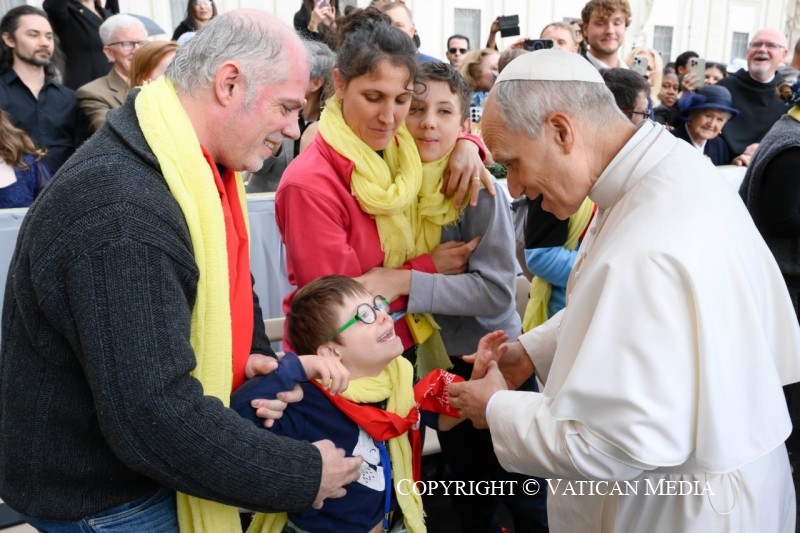Cycle of Catechesis – Jubilee 2025. Jesus Christ our Hope. IV. The Resurrection of Christ and the Challenges of the Contemporary World 2. The Resurrection of Christ, the Response to Human Sadness
Dear brothers and sisters, good morning! And welcome to you all!
The resurrection of Jesus Christ is an event that one never finishes contemplating and meditating on, and the more one explores it, the more one is filled with wonder, drawn in as if by an overwhelming yet fascinating light. It was an explosion of life and joy that changed the meaning of reality itself, from negative to positive; yet it did not happen in a striking way, much less a violent one, but gently, hidden, one might say humbly.
Today we will reflect on how Christ’s resurrection can heal one of the malaises of our time: sadness. Intrusive and widespread, sadness accompanies the days of many people. It is a feeling of precariousness, at times profound desperation, which invades one’s inner space and seems to prevail over any impetus to joy.
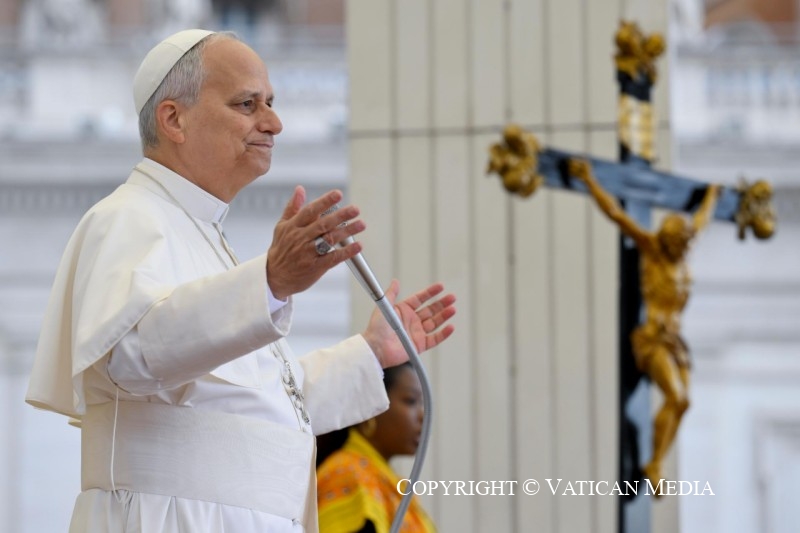
Sadness robs life of meaning and vigour, turning it into a directionless and meaningless journey. This very current experience reminds us of the famous account in the Gospel of Luke (24: 13-29) of the two disciples of Emmaus. Disappointed and discouraged, they leave Jerusalem, leaving behind the hopes they held in Jesus, who has been crucified and entombed. In the opening lines, this episode presents a paradigm of human sadness: the end of the objective to which so much energy has been invested, the destruction of what seemed to be the essence of their lives. Their hope is dashed; desolation has taken hold of their hearts. Everything has imploded in a very short space of time, between Friday and Saturday, in a dramatic sequence of events.
The paradox is truly emblematic: this sad journey of defeat and return to ordinary life occurs on the same day as the victory of light, of the Pasch that has been fully consummated. The two men turn their backs on Golgotha, on the terrible scene of the cross, still imprinted on their eyes and their hearts. It seems that all is lost. They must return to their former lives, keeping a low profile and hoping not to be recognized.
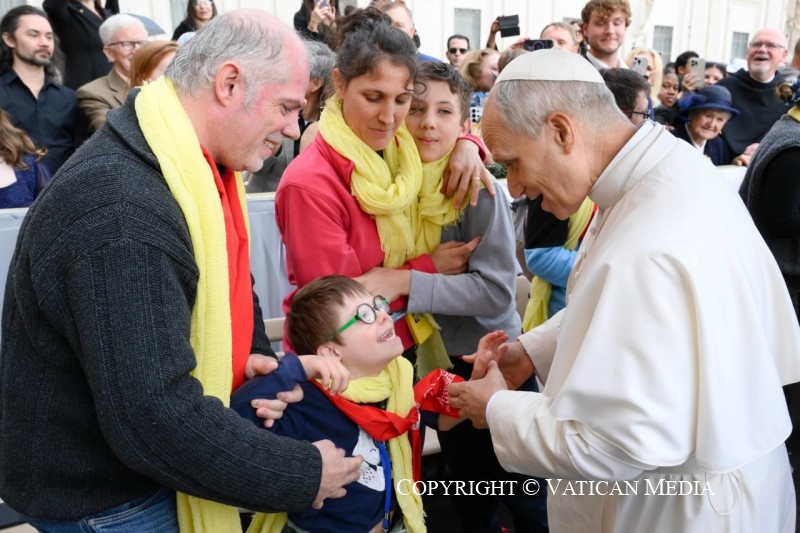
At a certain point, a traveller joins the two disciples, perhaps one of the many pilgrims who have been to Jerusalem for Easter. It is the risen Jesus, but they do not recognize him. Sadness clouds their gaze, erasing the promise that the Master had made several times: that he would be killed and that on the third day he would rise again. The stranger approaches and shows interest in what they are saying. The text says that the two “stood still, looking sad” (Lk 24:17). The Greek adjective used describes an all-encompassing sadness: the paralysis of the soul is apparent on their faces.
Jesus listens to them, allowing them to unburden their disappointment. Then, with great frankness, he rebukes them for being “foolish … and slow of heart to believe that all the prophets have declared!” (v. 25), and through the Scriptures he shows that Christ had to suffer, die and rise again. The warmth of hope is rekindled in the hearts of the two disciples, and then, when night falls and they arrive at their destination, they invite their mysterious travelling companion to stay with them.
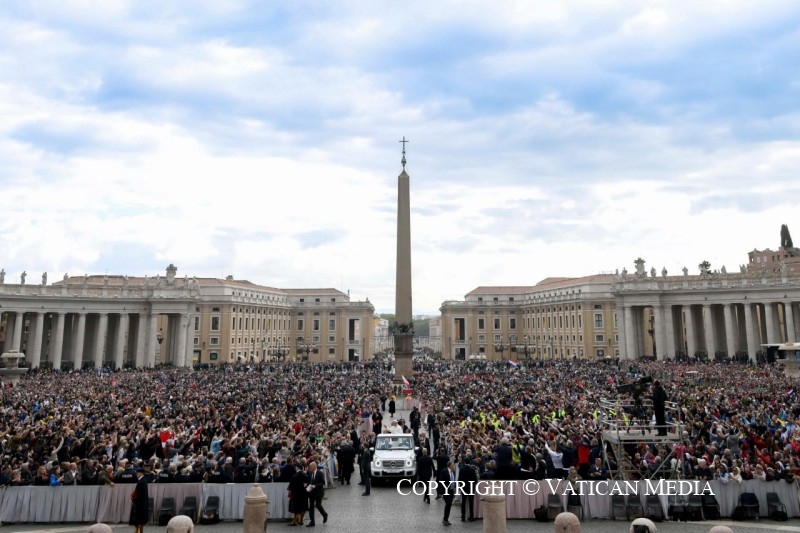
Jesus accepts, and takes his seat at the table with them. Then he takes the bread, breaks it and offers it. At that moment, the two disciples recognize him… but he immediately disappears from their view (vv. 30-31). The gesture of the breaking of the bread reopens the eyes of the heart, illuminating once again the vision clouded by despair. And then everything becomes clear: the shared journey, the tender and powerful word, the light of truth… Immediately, joy is rekindled, energy flows back into their weary limbs, and gratitude returns to their memory. And the two hurry back to Jerusalem to tell the others everything.
“The Lord has risen indeed” (cf. v. 34). In this adverb, indeed, the certain outcome of our history as human beings is fulfilled. It is no coincidence that this is the greeting Christians exchange on Easter Day. Jesus did not rise in words, but in deeds, with his body bearing the marks of his passion, a perennial seal of his love for us. The victory of life is not an empty word, but a real, tangible fact.
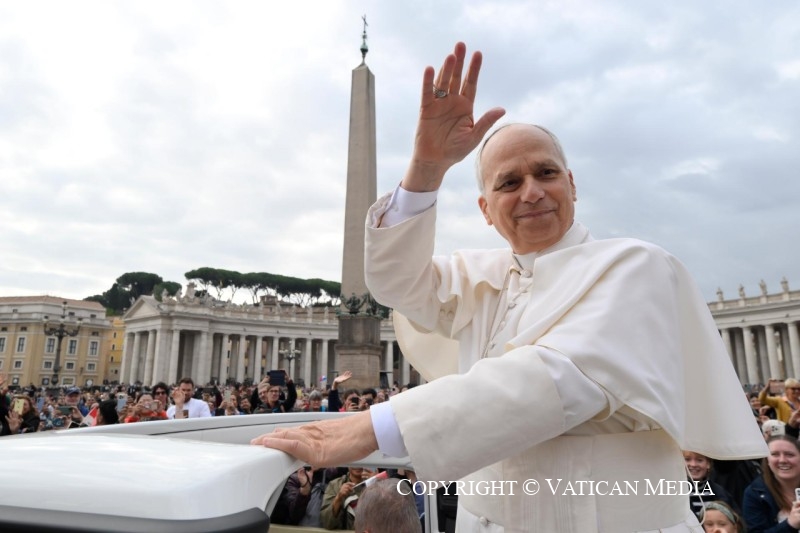
May the unexpected joy of the disciples of Emmaus be a gentle reminder to us when the going gets tough. It is the Risen One who radically changes our perspective, instilling the hope that fills the void of sadness. On the paths of the heart, the Risen One walks with us and for us. He bears witness to the defeat of death and affirms the victory of life, despite the darkness of Calvary. History still has much goodness to hope for.
To recognize the Resurrection means to change one’s outlook on the world: to return to the light to recognize the Truth that has saved us, and that saves us. Sisters and brothers, let us remain watchful every day in the wonder of the Pasch of the risen Jesus. He alone makes the impossible possible!
Source: vatican.va
